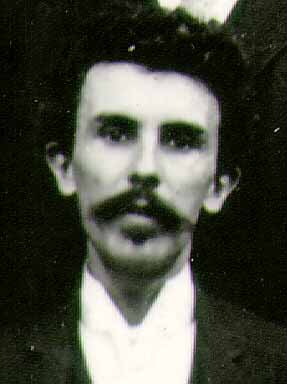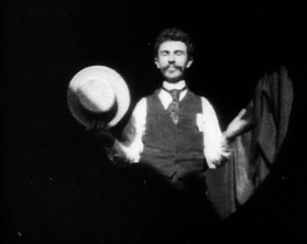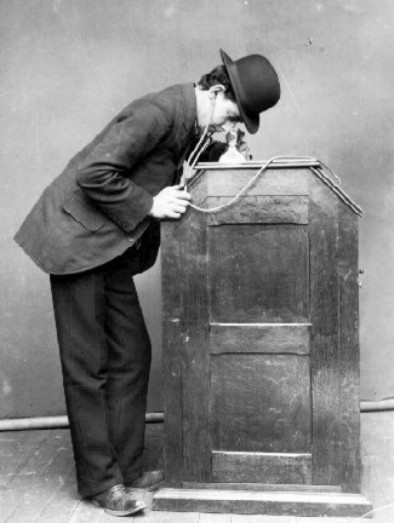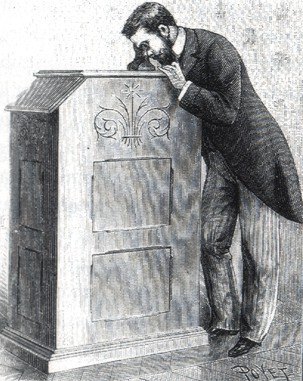<Back to Index>
- Inventor William Kennedy Laurie Dickson, 1860
- Composer Ivan Zajc, 1832
- King of Norway Haakon VII, 1872
PAGE SPONSOR


William Kennedy Laurie Dickson (3 August 1860 – 28 September 1935) was a French born Anglo - Scots inventor who devised an early motion picture camera under the employ of Thomas Edison (post - dating the work of Louis Le Prince).
Dickson was born on 3 August 1860 in Le Minihic-sur-Rance, Brittany, France. His mother was Elizabeth Kennedy - Laurie (1823? – 1879) who may have been born in Virginia and was of Scottish descent. His father was James Waite Dickson, a Scottish artist, astronomer and linguist. James claimed direct lineage from the painter Hogarth, and from Judge John Waite, the man who sentenced King Charles I to death. A gifted musician, his mother, Elizabeth Kennedy-Laurie Dickson, was related to the Lauries of Maxwellton (immortalised in the ballad Annie Laurie) and connected with the Duke of Atholl and the Royal Stuarts.
In 1879 Dickson, his mother, and two sisters moved from Britain to Virginia. In 1888, American inventor and entrepreneur Thomas Alva Edison conceived of a device that would do "for the Eye what the phonograph does for the Ear". In October, Edison filed a preliminary claim, known as a caveat, with the U.S. Patent Office outlining his plans for the device. In March 1889, a second caveat was filed, in which the proposed motion picture device was given a name, the Kinetoscope. Dickson, then the Edison company's official photographer, was assigned to turn the concept into a reality.
Dickson invented the first practical celluloid film for this application and decided on 35 mm for the size, a standard still used.
Dickson and his team at the Edison lab then worked on the development of the Kinetoscope for several years. The first working prototype was unveiled in May 1891 and the design of the system was essentially finalized by the fall of 1892. The completed version of the Kinetoscope was officially unveiled at the Brooklyn Institute of Arts and Sciences on 9 May 1893. Not technically a projector system, it was a peep show machine showing a continuous loop of the film Dickson invented, lit by an Edison light source, viewed individually through the window of a cabinet housing its components. The Kinetoscope introduced the basic approach that would become the standard for all cinematic projection before the advent of video.
It creates the illusion of movement by conveying a strip of perforated film bearing sequential images over a light source with a high - speed shutter. Dickson and his team also devised the Kinetograph, an innovative motion picture camera with rapid intermittent, or stop-and-go, film movement, to photograph movies for in-house experiments and, eventually, commercial Kinetoscope presentations.
Dickson was the first person to make a film for a Pope, and at the time his camera was blessed by His Holiness Leo XIII.
In late 1894 or early 1895, Dickson became an ad hoc advisor to the motion picture operation of the Latham brothers, Otway and Grey, and their father, Woodville, who ran one of the leading Kinetoscope exhibition companies. Seeking to develop a movie projector system, they hired former Edison employee Eugene Lauste, probably at Dickson's suggestion. In April 1895, Dickson left Edison's employ and joined the Latham outfit. Alongside Lauste, he helped devise what would become known as the Latham loop, allowing the photography and exhibition of much longer filmstrips than had previously been possible. The team of former Edison associates brought to fruition the Eidoloscope projector system, which would be used in the first commercial movie screening in world history on 20 May 1895. With the Lathams, Dickson was part of the group that formed the American Mutoscope and Biograph Company, before he returned permanently to work in the United Kingdom in 1897.
Dickson left Edison's company and formed his own company that produced the mutoscope, a form of hand cranked peep show movie machine. These machines produced moving images by means of a revolving drum of card illustrations,
taken from an actual piece of film. They were often featured at seaside
locations, showing (usually) sequences of women undressing or acting as
an artist's model. In Britain, they became known as "What the butler saw" machines, taking the name from one of the first and most famous softcore reels.

